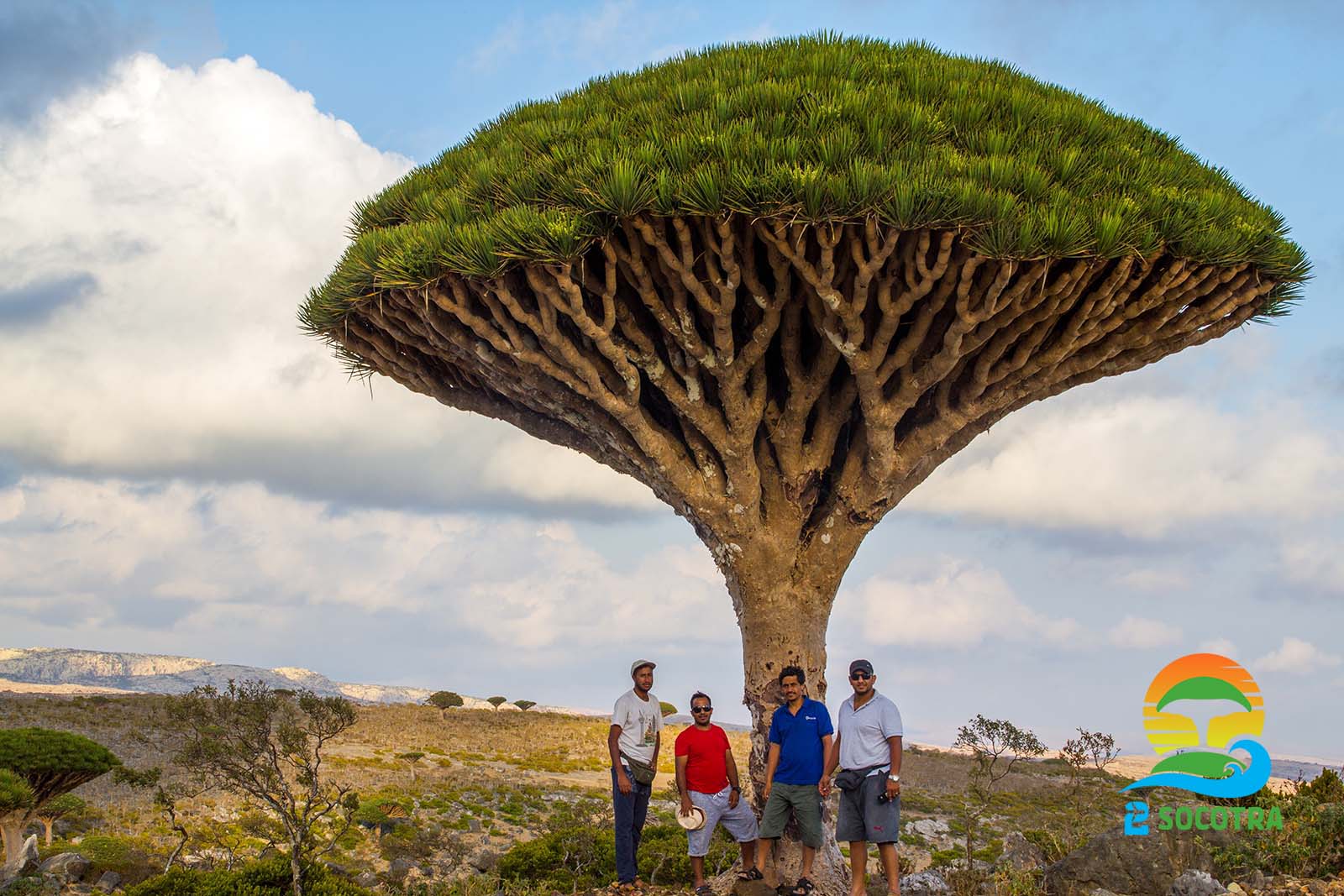
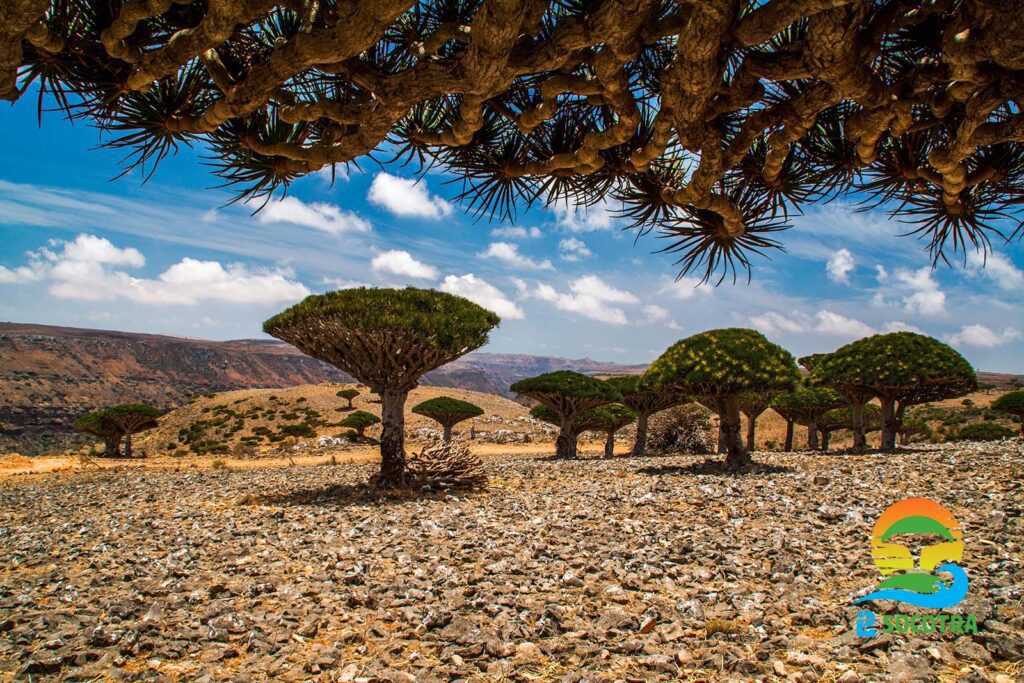
The Dragon’s Blood Tree is unique, one of the strangest trees in the world. The tree has a distinctive and picturesque exterior, as it looks like a vast canopy; the leaves grow on the tips of the branches only upwards. Many components characterize the tree because it grows by bilateral branching. Each unit divided into two other departments until the leaves grow at the end of the branches. It produces a lot of green leaves and is renewed every three or four years; as the leaves fall off, other leaves grow in their place. Rare Dragon Blood Tree | This Is What Make Tourist Love Socotra Island.
The Characteristics of the Dragon’s Blood Trees

The dragon’s blood tree is a rare type of plant and belongs to the genus “Dracaena” of the family “Asparagaceae.” The tree grows on rocky ground and in high places; It can retain water for long years, tolerate drought, and adapt to arid conditions with little water and soil. The history of the Dragon’s Blood Tree goes back more than 50 million years; It appeared in the Mediterranean basin and is found in a nature reserve that includes more than 360 species of rare plants and animals on the island of Socotra in Yemen. It is also found on Mount Dhofar in the Sultanate of Oman and in some semi-tropical forests.
What Does the Dragon’s Blood Tree Look Like?
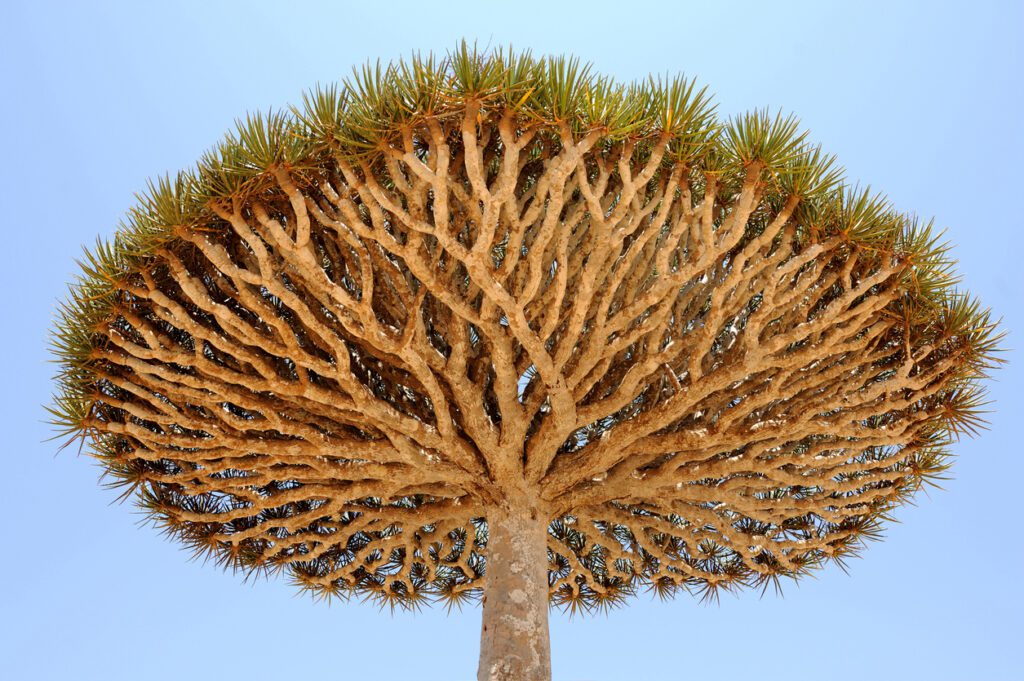
Like other monocotyledons, such as palms, the dragon’s blood tree grows from the tip of the stem, with the long, stiff leaves borne in dense rosettes at the end (4, 5, 7). It branches at maturity to produce an umbrella-shaped crown, with leaves that measure up to 60 cm long and 3 cm wide. The trunk and the branches of the dragon blood are thick and stout and display dichotomous branching, where each of the units repeatedly divides into two sections.
The Benefits of the Dragon’s Blood Trees
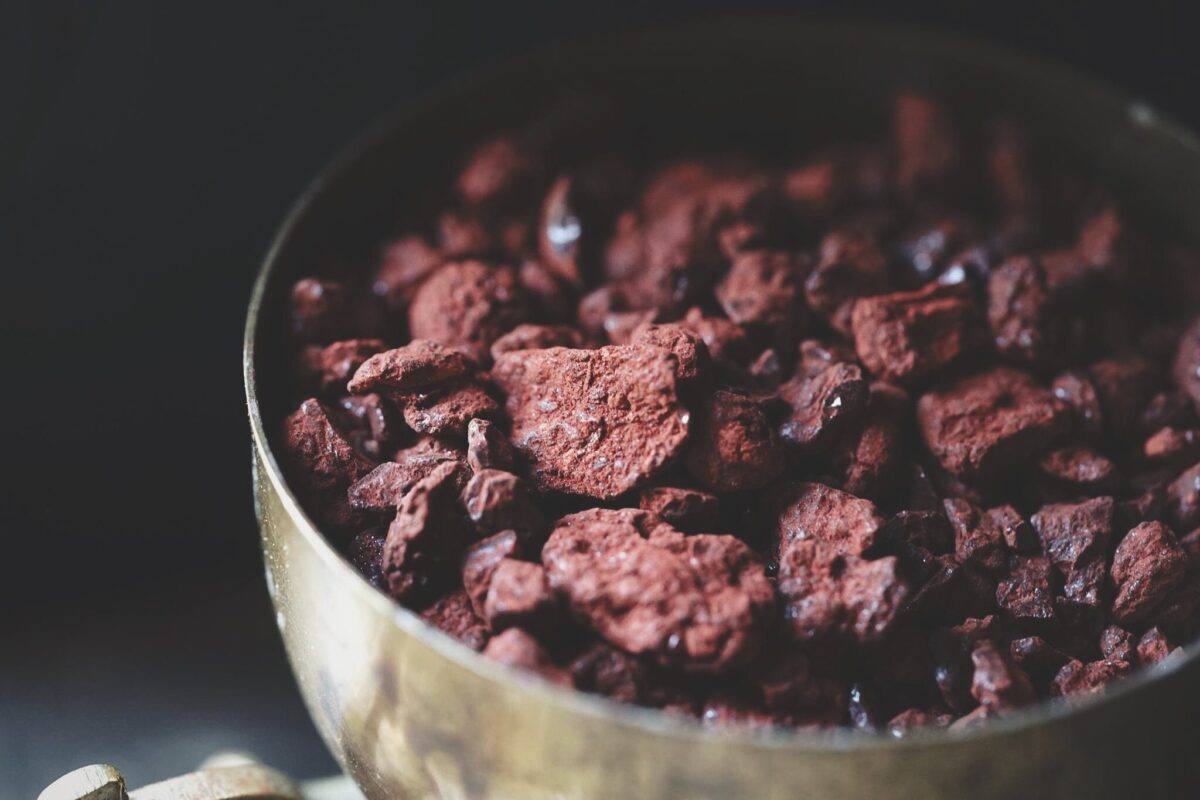
The most important thing that distinguishes the dragon’s blood tree from all trees in the world is the appearance of blood when its stem is cut off; That is why that name is called it. This bloody liquid is a kind of “resin” crimson in color; it has no smell or taste. It is of very great importance. It contains an active substance called “Draco” that has many medical uses and is used in the pharmaceutical industry to treat some health problems, including: Treatment of wounds and burns; It works to clot the blood and heal wounds quickly. Treating infections and skin ulcers. Treating digestive problems and stomach ulcers. Stop internal bleeding anywhere inside the human body. Antiseptic and astringent for gums. It involves in manufacturing kinds of toothpaste. Draco includes in some industries: wool dyeing, varnish and printing ink industry, marble dyeing, pottery coloring, lipstick industry, and many other industries and uses. In short, they are treating infections and skin ulcers and treating digestive problems, and stomach ulcers. Stop internal bleeding anywhere inside the human body. Antiseptic and astringent for gums. It involves in the manufacture of kinds of toothpaste.
How Are Seeds of the Dragon’s Blood Trees Different?
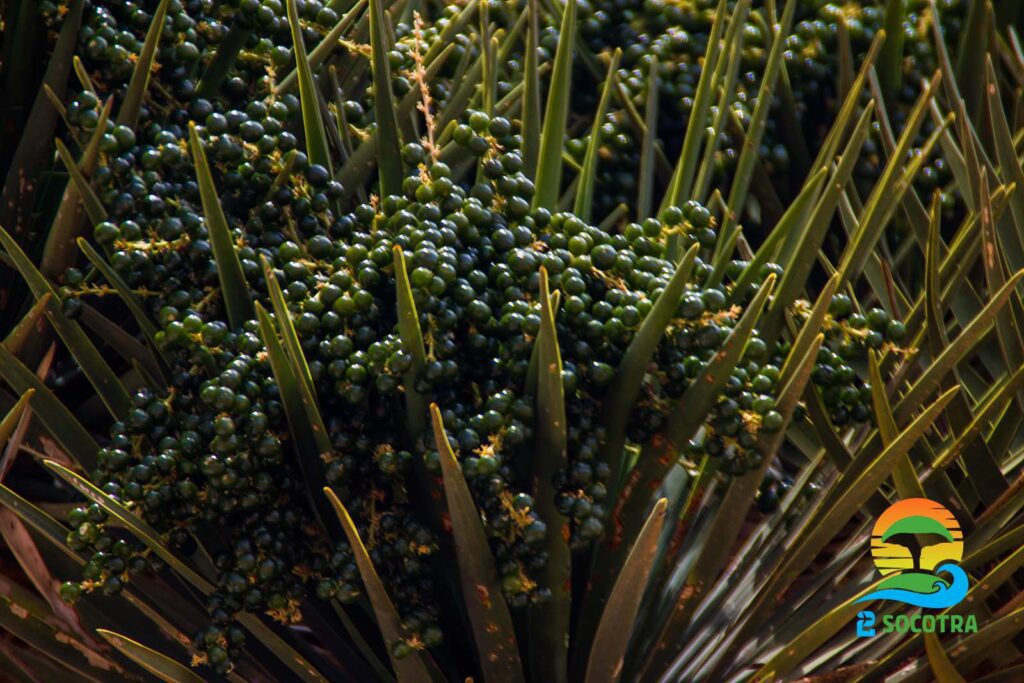
Its fruits are small fleshy berries containing between 1 and 4 seeds. They turn from green to black and then become orange when ripe as they develop. The birds eat berries (e.g., Onychognatus species) and dispersed. The seeds are 4–5 mm in diameter and weigh on average 68 mg. The berries exude a deep red resin known as dragon’s blood.
The Red Honey in Dragon’s Blood Trees
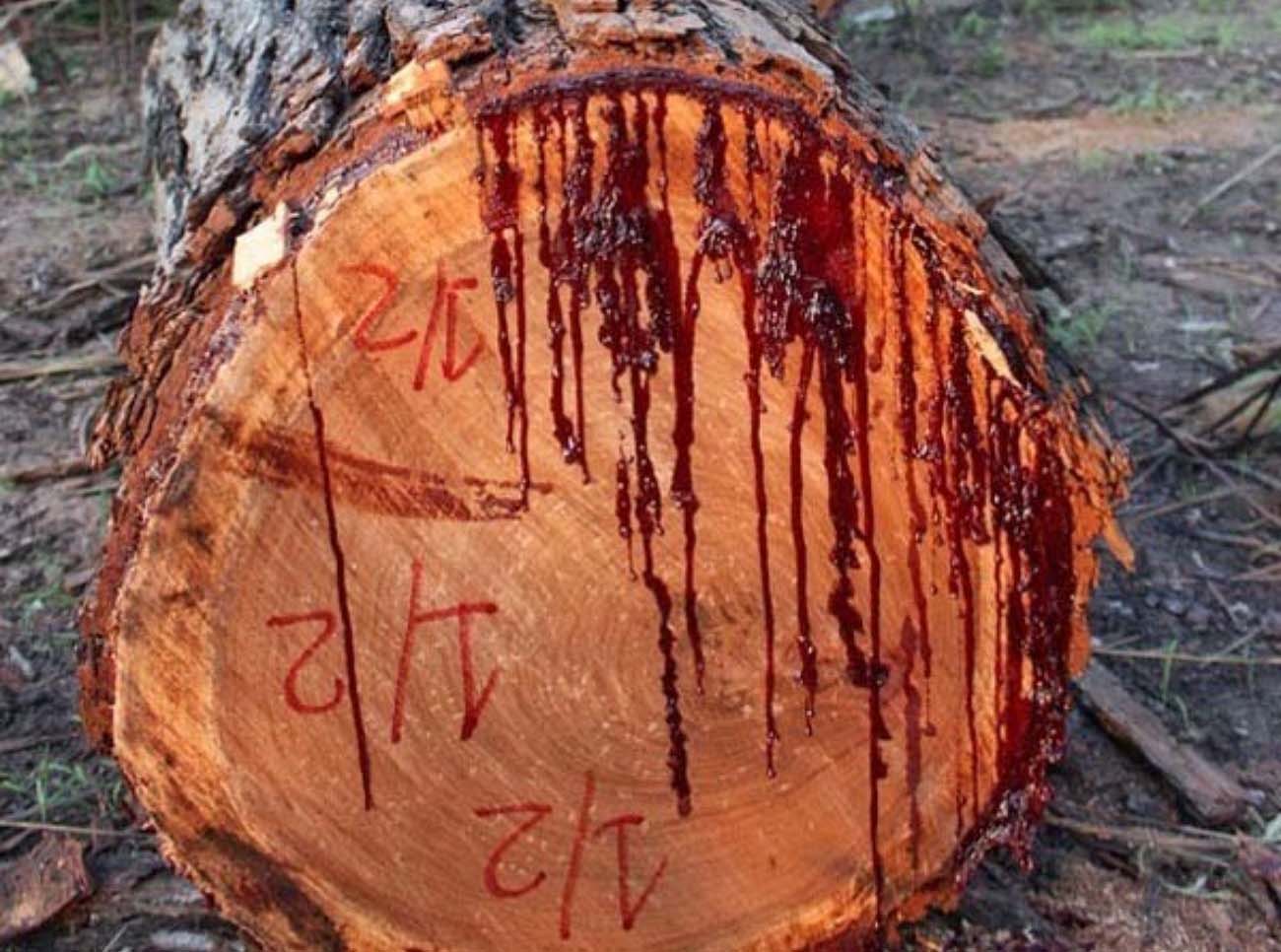
Red honey is extracted from the dragon’s blood tree. It is one of the most expensive types of honey, and it has many health benefits. The roots are used in some treatments, including the treatment of rheumatism. The tree’s wood is also used in some industries, including the manufacture of beehives, and the leaves are used in the manufacture of ropes. And do not forget its importance as a giant canopy under which rare animals live, protecting them from the sun’s harmful rays.
Do Dragon’s Blood Trees have another name?
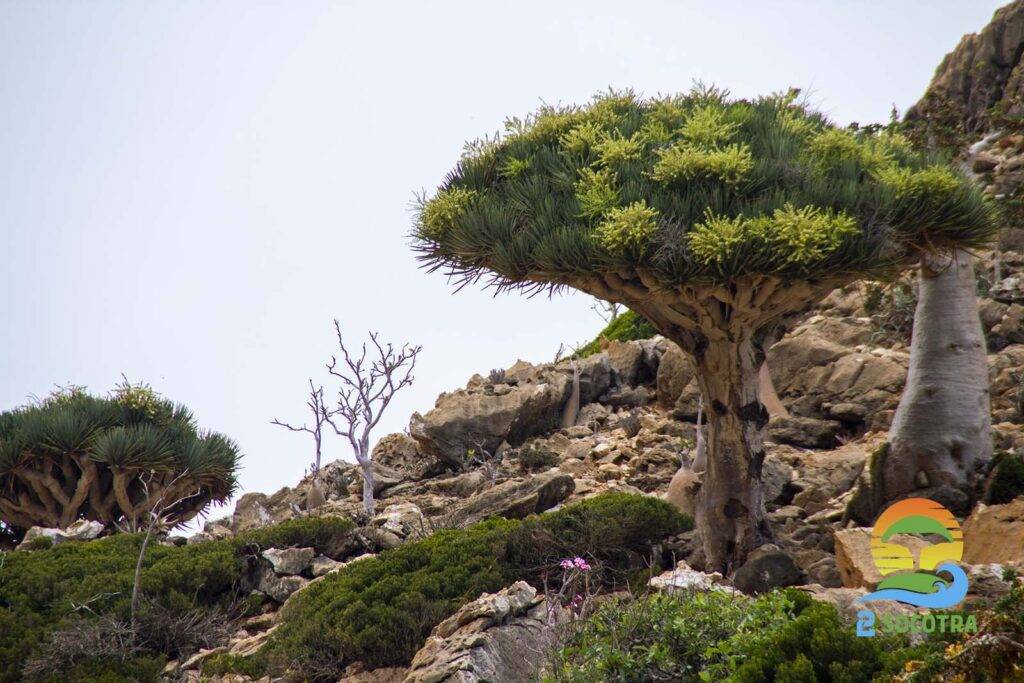
The tree is also called the “Blood Tree of the Two Brothers,” and this name goes back to the story of Cain and Abel, Where the first murder on Earth occurred. It is said in a Yemeni legend that Cain and Abel were the first to live on the island of Socotra, and when Cain killed his brother Abel, blood flowed, and the blood tree of the two brothers (the dragon’s blood tree) grew. Perennial, umbrella-like “dragon’s blood” trees spread over the mountaintops of the rugged islands of the Yemeni archipelago of Socotra, located in the Indian Ocean off the coast of the Horn of Africa, and testify to the unique biodiversity threatened by a major environmental crisis in a poor and war-wracked country.
What Is the local name of Dragon’s Blood Trees?
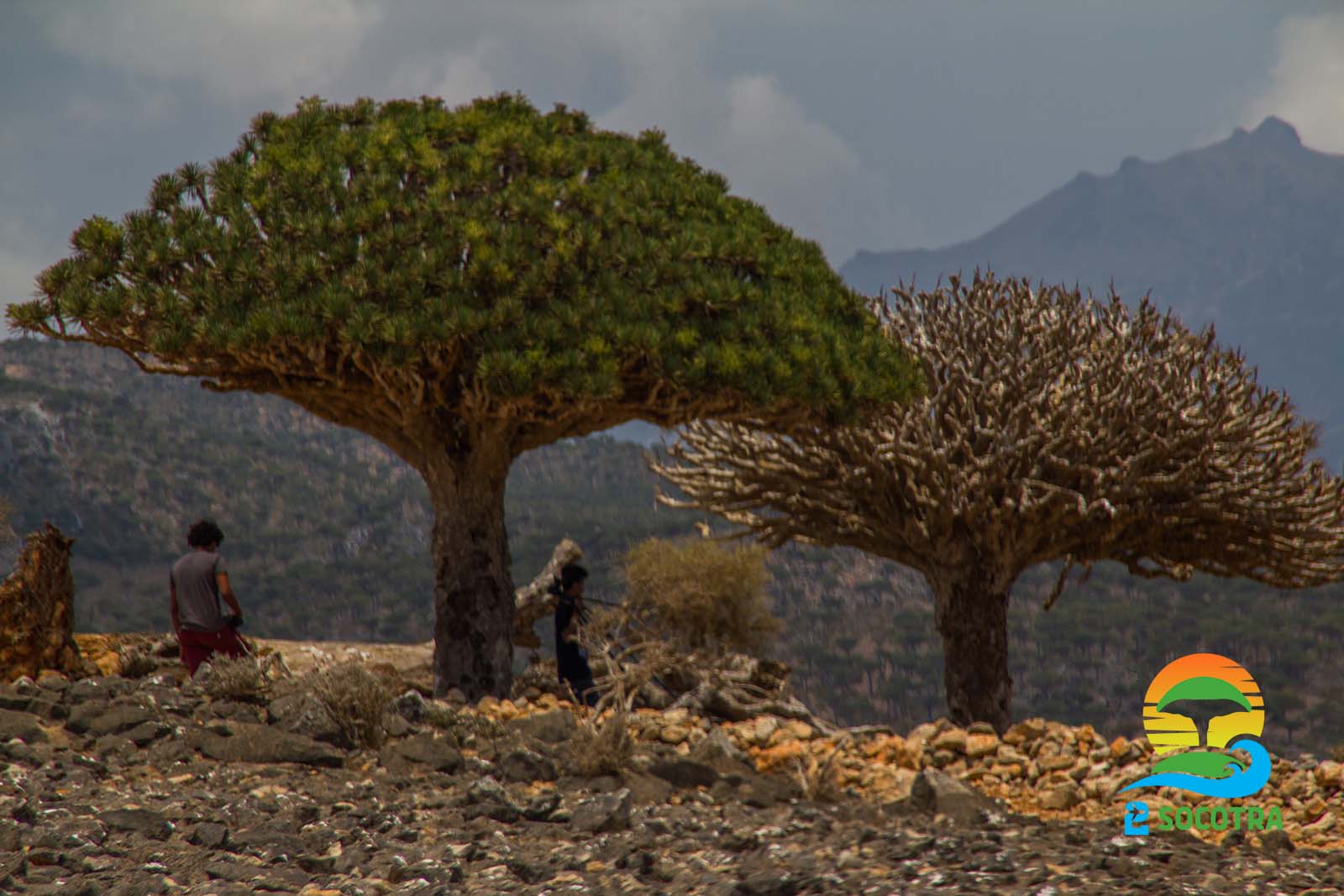
The tree’s common name among the island people is “Arhib,” and it is sometimes called “the blood of the Phoenix.” The storms that are getting more intense year after year are uprooting these famous trees for the archipelago, while herds of goats are destroying the young trees. It puts the entire fragile and unique ecosystem in the face of escalating danger, especially as these trees are essential for providing water. Socotra is home to about 50 thousand people. Thanks to its location, the archipelago has avoided many of the scourge of war. However, it has caused thousands of deaths and massive destruction in Yemen since its outbreak in 2014. As a result, the archipelago has been on the UNESCO list since 2008. According to the UN agency, of the 825 plant species identified in the archipelago, more than a third are considered unique. The “dragon’s blood” tree, which has medicinal benefits, is remarkable.
Legends about the two brothers’ blood tree
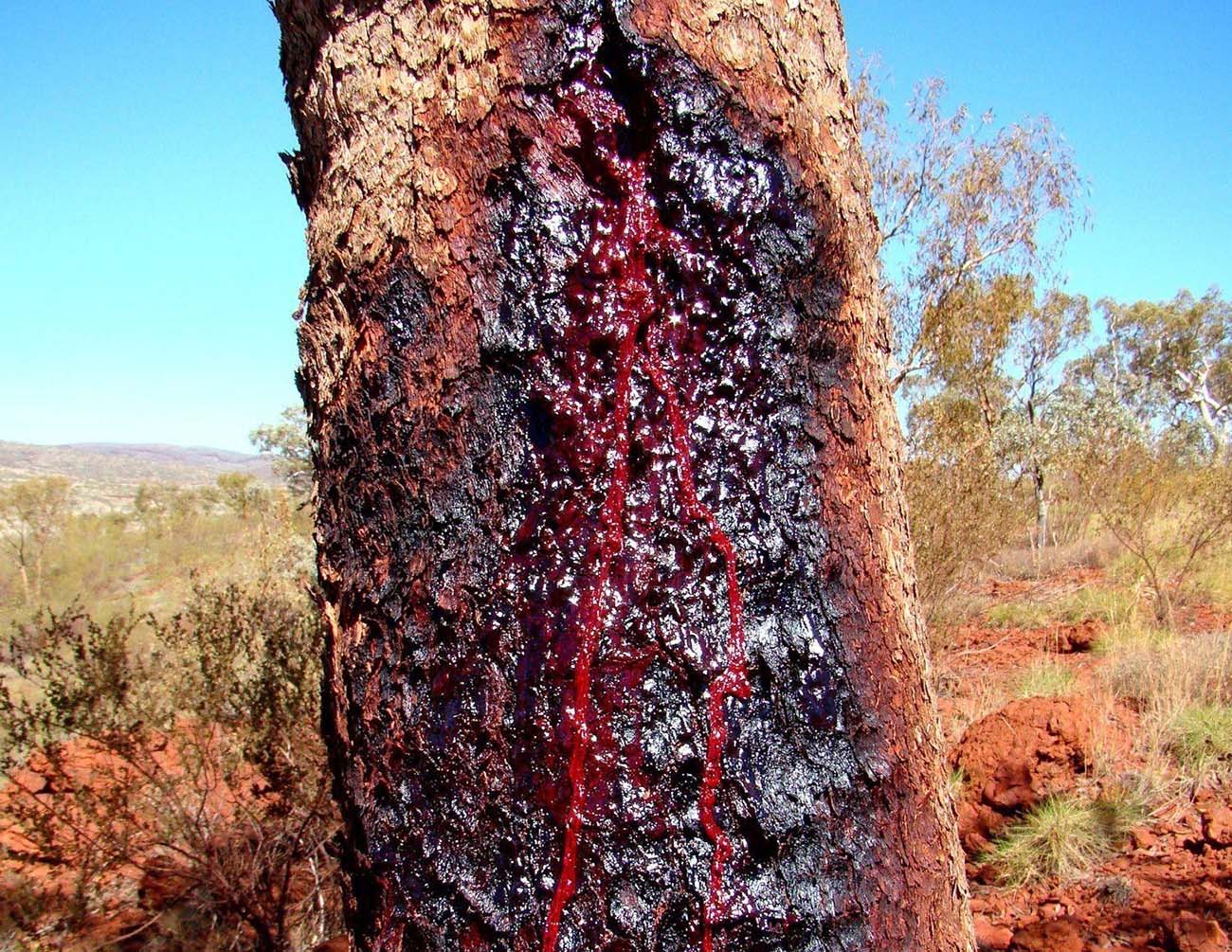
Many mythical tales have been woven around the tree of the two brothers’ blood, the most notable of which is that it grew from the blood of the two brothers Abel and Cain when the first murder known in history took place. Hence, according to the National Information Center in Yemen and Phil, their struggle to the death. The people of the island make cracks in the tree’s stem to let out a red sticky substance that is left to dry and then collected, and it is one of the island’s main exports and part of the spice trade in the region. As a treatment. It also used as a dye, incense, and body paint. Emirati travel blogger, Yasser Al-Bahzad, told CNN in Arabic that he was keen to document the dragon’s blood tree during his visit to Socotra Island in Yemen in 2013 when generations circulated and wrote stories and legends about this tree.
How does travel bloggers describe the Island?
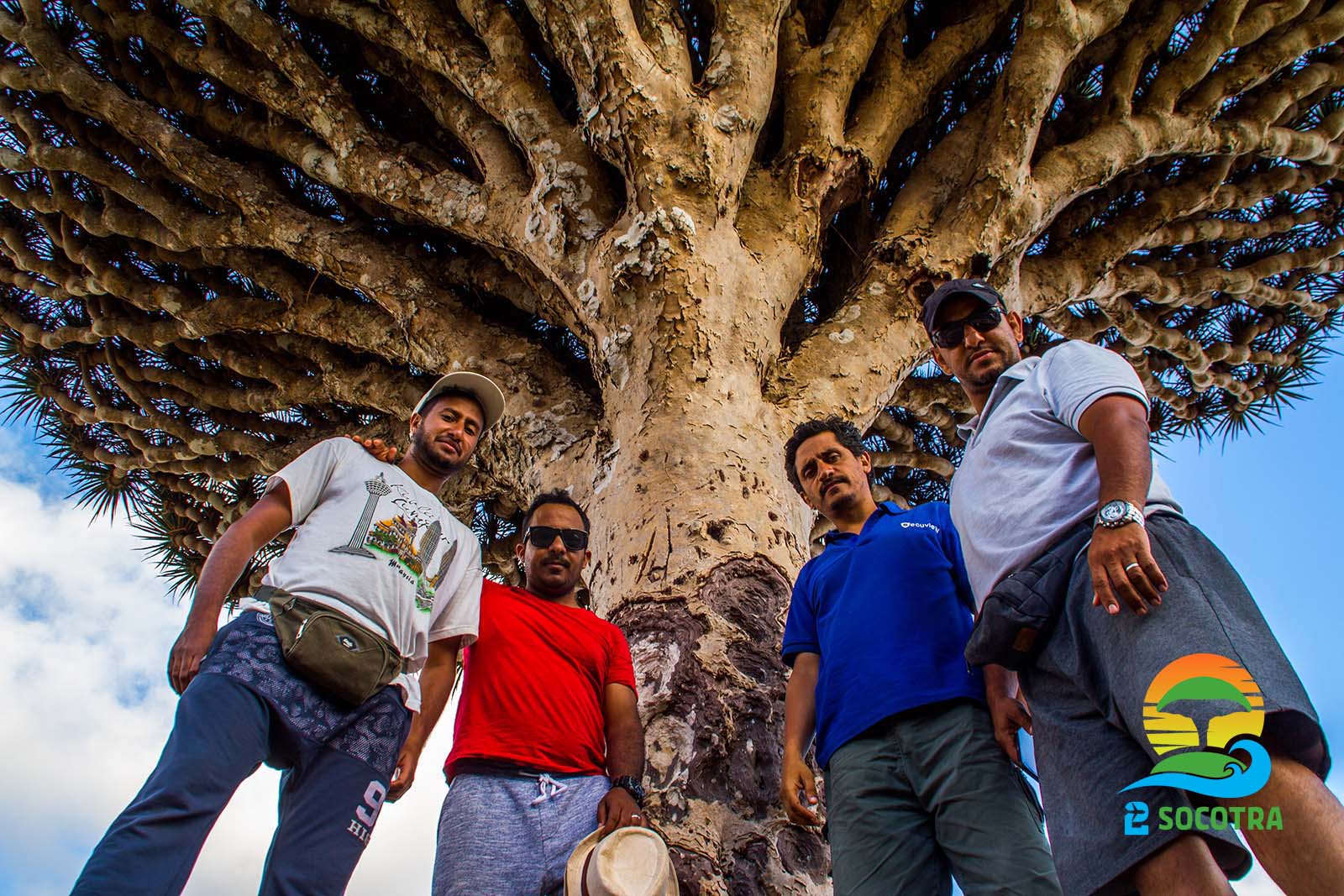
Al-Bahzad describes the island of Socotra as more like part of the fantasy of the legends of the lost world. All is because of its trees and strange and distinctive terrain. It is less visible in other regions of the world, adding that it “makes you feel like you are in the American science fiction and adventure movie. ” Al-Bahzad pointed out that the blood tree of the two brothers, also known as the phoenix’s blood, is the strangest form, as it resembles a vast inverted umbrella in its shape. Al-Bahzad said that the blood tree of the two brothers “has survived for thousands of years. However, its natural existence is limited to the Yemeni island of Socotra, which God has endowed with divine providence and an integrated ecological system.”According to an Emirati travel blogger, among the many ancient stories of the tree’s naming, one legend tells of a military commander encountering a dragon on Socotra Island.
Dragon blood tree scientific name
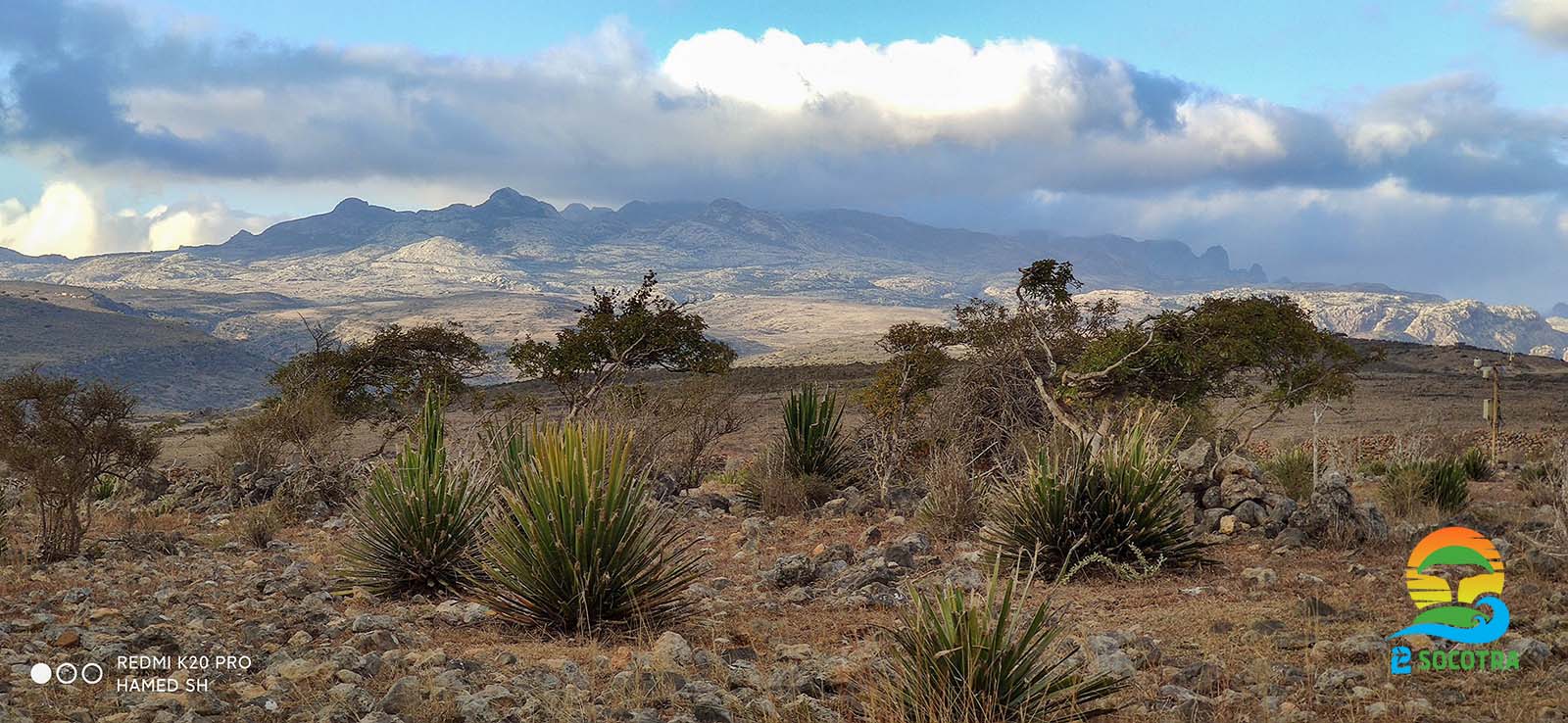
Dracaena cinnabari, the Socotra dragon tree or dragon blood tree, is a dragon tree native to the Socotra archipelago, part of Yemen, located in the Arabian Sea. It is named after the blood-like color of the red sap that the trees produce. The dragon’s blood tree usually produces flowers around March, though flowering varies with location. The flowers tend to grow at the end of the branches. The plants have inflorescences and bear small clusters of fragrant, white, or green flowers. The fruits take five months to completely mature. The fruits consider as fleshy berries, changing from green to black as they gradually ripen. The juicy berry fruit ends up being an orange-red color that contains one to three seeds. The berries are usually eaten and dispersed by birds and other animals. But residents and scientists alike are particularly concerned about the fate of this tree, also known as the “Blood of the Two Brothers” tree. On the one hand, it faces the problem of global warming; on the other hand, unregulated grazing, in addition to random construction, especially as it is slow-growing, takes nearly half a century to become able to reproduce.
Biology Facts
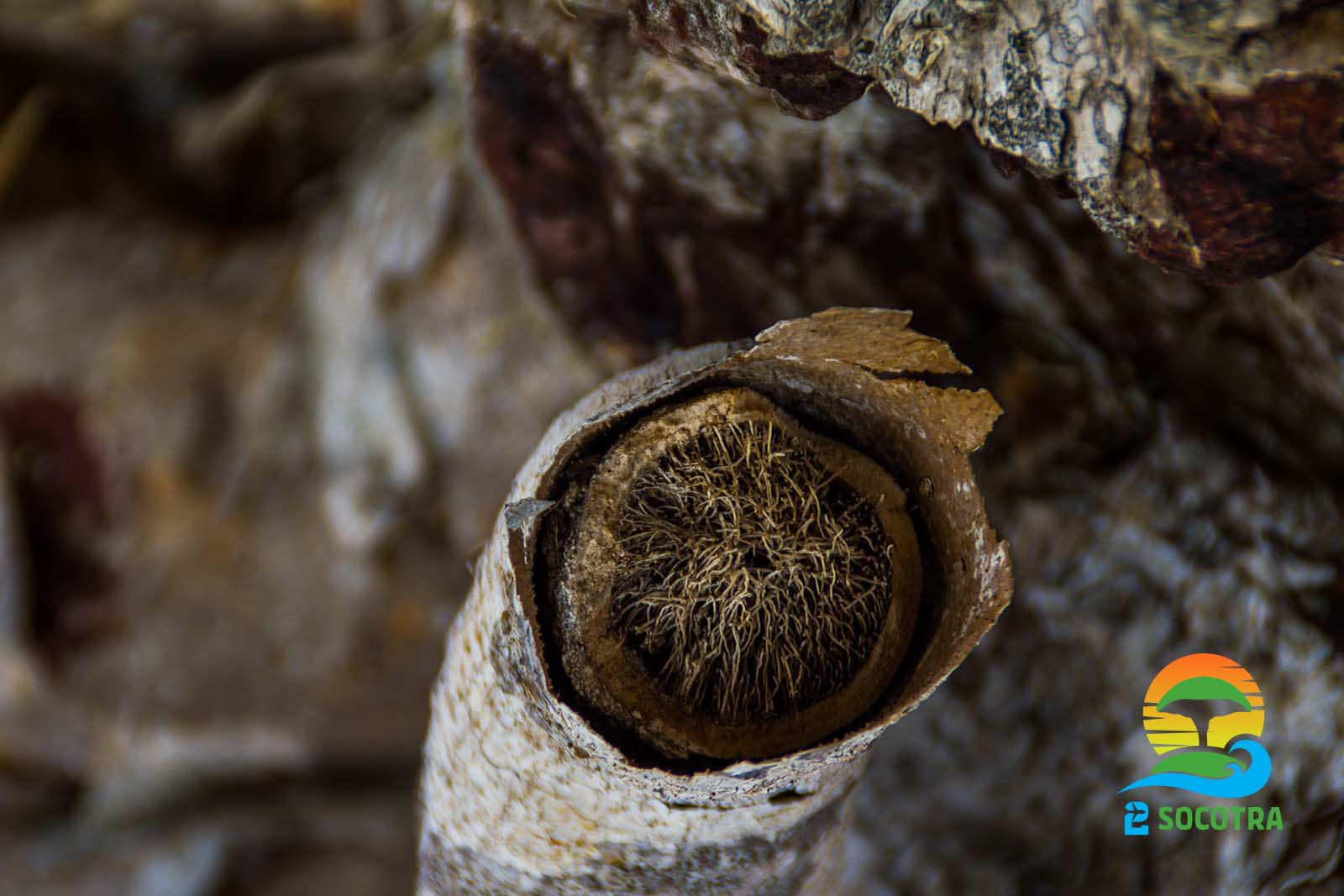
The unusual shape of the dragon’s blood tree is an adaptation for survival in arid conditions with low amounts of soil, such as on mountaintops. The large, packed crown provides shade and reduces evaporation. This shade also aids in the survival of seedlings growing beneath the adult tree, explaining why the trees tend to grow closer together. The dragon blood tree has a unique and strange appearance, with an “upturned, densely-packed crown having the shape of an uprightly held umbrella.” This evergreen species is named after its dark red resin, known as “dragon’s blood.” Unlike most monocot plants, Dracaena displays secondary growth; D. cinnabari even has growth zones resembling tree rings found in dicot tree species. Along with other arborescent Dracaena species, it has a distinctive growth habit called “droid habitus.” Its leaves are found only at the end of its youngest branches; its leaves are all shed every 3 or 4 years before new leaves are simultaneously mature. Branching tends to occur when the growth of the terminal bud is stopped due to either flowering or traumatic events (e.g., herbivory). A plant biologist says that the inability to replant these trees and work on their reproduction may eliminate what is left of them within a few decades. The blood tree of the two brothers is one of the rarest trees and plants endemic to the island of Socotra. The name of the tree has been associated with the island’s name for its fame and importance since ancient times. The blood tree of the two brothers is distinguished by its unique shape, which resembles an umbrella, and is found primarily in the mountainous heights on the island of Socotra; these amazing trees reach a height of between 6 and 9 meters, according to the official website of the National Information Center in Yemen.
In Short
Although the Dragon’s Blood Tree is located in a nature reserve, it is unfortunately subjected to human exploitation, other than the fluctuating climatic factors; This puts it in permanent danger of extinction. Of the 825 plant species identified in the Yemeni Socotra archipelago, more than a third considered unique, according to UNESCO. The “Brothers’ Blood” or “Dragon’s Blood” tree, which has medicinal benefits, is remarkable. “Blood of the Two Brothers” or “Dragon’s Blood” trees on the Yemeni island of Socotra.
Interested to Visit Socotra Island
Don’t miss out on this incredible opportunity to witness the rare Dragon Blood Tree up close without emptying your wallet. Click the link below to unlock our unbeatable deals and embark on the adventure of a lifetime! Your journey to Socotra Island begins here. 🌊🏖️🌟
[Click Here for Exclusive Socotra Trips Packages]
